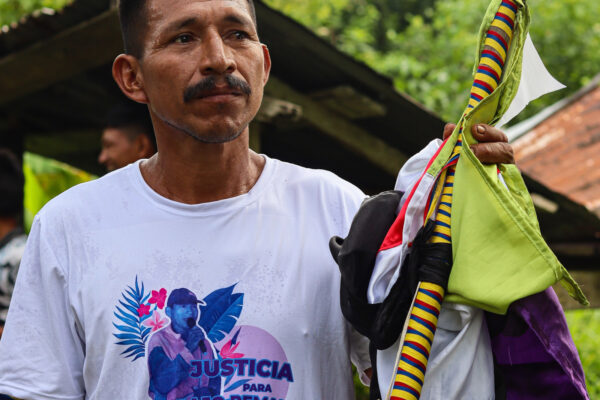The battle between the principle of conservation and the need for more oil has thrust the Gwich’in people in the far north of the Americas into a political battle that reaches from the Arctic to Washington and Texas.
The 7,000 or so Gwich’in, scattered among 15 villages in north-east Alaska and north-west Canada, have for centuries been reliant for food, clothing and tools on migrating porcupine caribou. But the main calving grounds of the caribou lie in a 1.5m acre coastal plain within the Arctic Circle, beneath which could be the continent’s biggest untapped source of oil.
To boost US energy security, the administration of George W. Bush favours opening up to the oil and gas industry the coastal plain, which lies within the 18m-acre Arctic National Wildlife Refuge.
How much oil lies beneath the plain is hotly disputed. The US Geological Survey (USGS) estimated in 1998 that reserves could total 5.7bn-16bn barrels of technically recoverable oil.
The Alaska Wilderness League conservation group interprets the USGS study, which it maintains is at best a guess, as suggesting economically recoverable oil could amount to around 3.2bn barrels scattered along the coastal plain.
The Gwich’in, say any development in the area would severely disrupt, if not destroy, their way of life. But opening up the area for development is overwhelmingly favoured by Alaska’s political establishment and by a majority of inhabitants – including the indigenous Inuit of Kaktovik on the coastal plain.
Alaska Senator Frank Murkowski, the Republican head of the powerful Senate energy and natural resources committee, and Alaska Governor Tony Knowles, a Democrat, are both enthusiastic backers of development.
Meanwhile, a broad-based coalition called Arctic Power maintains a strong lobbying effort in favour of development. Backed by a wide spectrum of Alaskan business, Arctic Power also receives support from the Alaska Oil & Gas Association, which includes BP, Chevron, Marathon Oil, Shell Western, ExxonMobil and Phillips Alaska.
During the US election campaign, the fate of the Arctic refuge was presented in starkly partisan terms. Mr Bush was in favour of development while his Democratic opponent Al Gore was opposed.
However, the issue has to some extent cut across party lines, with strong backing for development from oil-producing states such as Alaska and Texas, and strong opposition from the urban east and west coasts.
The issue could become more partisan as Republicans in Congress seek to demonstrate loyalty to Mr Bush.
Drilling is blocked unless Congress votes to approve it – a vote which could come within a matter of months.
“I perceive that if the proponents of drilling don’t succeed this year, then you can forget it,” said Roger Herrera, a consultant and lobbyist for Arctic Power. “This is the last chance to open up the reserve as a result of a proper debate – although it could be forced on the US by future crises.
” The industry asserts that with modern techniques, oil can be produced from installations which would leave only a small “footprint” on the environmentally sensitive tundra. “It’s all to do with smaller facilities. The industry is deploying all the tricks on reducing impact,” said Mr Herrera.
Canada, which has given full protection to the caribou on its side of the border, opposes all drilling in the refuge, as do the governments of the Yukon and the Northwest Territories and a string of environmental groups.
US opponents of drilling, such as the National Audubon Society, have urged Mr Bush to embrace what it calls a Republican conservationist tradition which goes back to Teddy Roosevelt in the early part of the last century.
The Arctic refuge itself was set up by the Republican president Dwight D. Eisenhower in the 1950s. President Richard Nixon refused to bow to industry pressure to allow drilling, and the refuge was expanded in 1980 under President Jimmy Carter, a Democrat, though a Senate compromise meant the coastal plain was not given permanent protection. Sarah James of the Gwich’in steering committee hopes that Washington will eventually grant the Alaskan refuge permanent legal protection. Otherwise, she believes, the oil industry will keep up the pressure for drilling until it wins.
Sir John Browne, BP’s chief executive, told BP shareholders this month that he supported opening up the refuge. However “we will make a decision on whether we are there – if it is opened – when we understand how it is to be opened, and when we understand what is there to be discovered,” he said.
The combination of corporate power, local backing for development and political concern for US energy security appears to the Gwich’in to represent an an awesome array of interests, says Ms James:
“It’s going to take away who we are, take away the food on the table, our clothes and our tools. It’s going to take away our souls.”













